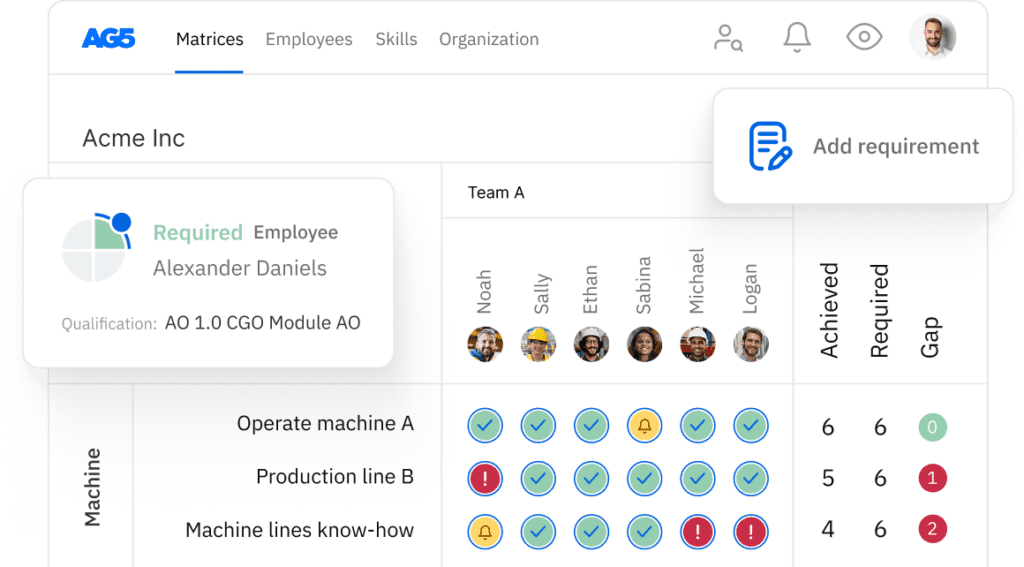Unleash your team’s hidden potential with competency-based HRM
In this article, we discuss the benefits of competency-based human resource management, which enhances employee performance, engagement, hiring decisions, and succession planning while addressing key challenges.

Human resource management (HRM) is crucial in achieving organizational goals and objectives. Modern HRM, however, has shifted from traditional practices to competency-based human resource management (CBHRM)
CBHRM is an approach that involves identifying and developing the knowledge, skills, and abilities of employees that are essential for the success of an organization. This approach focuses on defining job requirements in terms of measurable and observable behaviors, then assessing employee performance based on those behaviors. In this article, we will explore the critical components of CBHRM, its benefits and challenges, and some best practices for its implementation.
What are the components of competency-based HRM?Copied
Competency identification
This is the first step in the CBHRM process. It involves identifying the competencies essential for success in a particular job or role. Competency identification is typically made through job analysis, which involves examining the required tasks, responsibilities, and knowledge.
Competency modeling
It involves developing a framework that defines the specific competencies required for each job or role in an organization. The competency model provides a clear understanding of the skills and knowledge that employees need to possess to perform their jobs effectively. The model is typically developed through a collaborative process involving HR professionals, managers, and employees.
Competency assessment
It involves evaluating an employee’s performance against the defined competencies. This assessment can be done through various methods, including self-assessment, 360-degree feedback, and performance appraisals. The assessment results provide feedback to employees about their strengths and weaknesses and can be used to develop individual development plans.
Competency development
It involves providing employees with the training, coaching, and resources they need to improve their competencies. Development plans are typically based on the competency assessment results and may include formal training programs, on-the-job training, coaching, mentoring, and job shadowing.
What are the benefits of competency-based HRM?Copied
1. Improved employee performance
CBHRM provides a clear understanding of the specific competencies required for success in a job or role, which can help employees to perform their jobs more effectively. Competency mapping and development can can also help to identify and address skill gaps, leading to improved performance.
2. Increased employee engagement
CBHRM involves identifying and developing competencies, which can lead to increased engagement and motivation. Employees are more likely to feel valued and invested in the organization when engaged in their development.
3. Better hiring decisions
competency-based human resource management can help organizations to make better hiring decisions by identifying the specific competencies required for success in a job or role. This can help ensure new hires have the skills and knowledge to perform their jobs effectively.
4. Improved succession planning
CBHRM can also help organizations to identify potential future leaders and develop their competencies. This can help ensure a smooth leadership transition and maintain organizational stability.

What are the challenges of competency-based HRM?Copied
Time and resource intensive
Developing and implementing a competency-based HRM system can be time- and resource-intensive. It requires a significant investment in training, assessment, and development programs and ongoing monitoring and evaluation.
Resistance to change
Implementing a competency-based HRM system may be met with resistance from employees who are used to more traditional approaches to performance management. Managers may also resist change, mainly if they are not familiar with competency-based HRM.
Subjectivity in assessment
Competency assessments can be subjective, mainly if they rely on self-assessment or 360-degree feedback. This can lead to inconsistent or unreliable results.
Difficulty in measuring results
It can be challenging to measure the results of a competency-based HRM system, particularly in terms of its impact on business outcomes. This can make it tough to demonstrate the ROI of the system.
How AG5 software can help competency-based human resource managementCopied
AG5 competency management software can be valuable in implementing a competency-based HRM system. AG5 software can help organizations identify, assess, and develop employees’ competencies more streamlined and efficient. Some key benefits of AG5 competency management software include the following:
- Automated competency assessment: AG5 software can automate the assessment process, making it more objective and reliable. This can reduce subjectivity and ensure consistent results.
- Personalized development plans: AG5 software helps organizations develop customized development plans for their employees based on their competencies and skill gaps. This can help employees to focus on developing the specific skills they need to succeed in their roles
- Real-time skill tracking: AG5 competency-based human resource management can track employee progress in real-time, allowing managers to monitor and evaluate their development. This can help managers to identify and address issues before they become significant problems.
- Improved succession planning: AG5 software can help organizations to identify potential future leaders and develop their competencies. This can help ensure a smooth leadership transition and maintain organizational stability.
Conclusion
Competency-based human resource management is a practical approach for organizations to identify, assess, and develop the competencies of their employees.
While implementing a competency-based HRM system can be challenging, adopting a competency-based HRM approach and utilizing AG5 skills management software, organizations can develop the skills and knowledge of their employees, leading to improved business outcomes and a more engaged workforce.

